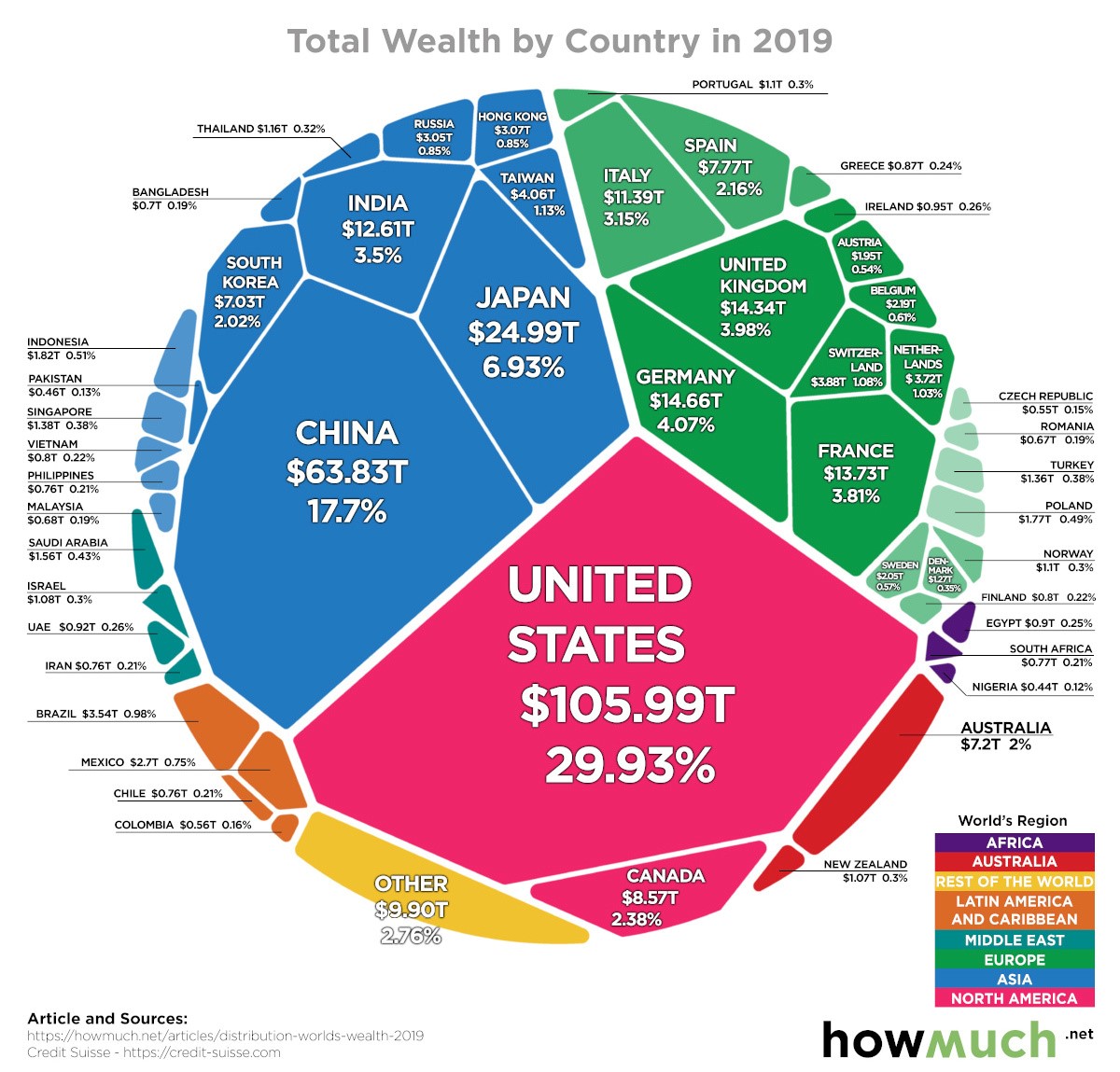
GLOBAL WEALTH REPORT
CONTEXT
- Recently, Credit Suisse has released the Global Wealth Report 2020.
MORE ABOUT REPORT
- In 2019, total global wealth rose by USD 36.3 trillion and wealth per adult reached USD 77,309, which is 8.5% more when compared to 2018.
- Wealth per adult slipped to an average $76,984 from $77,309 at the start of the year,the report found.
- Switzerland, the Netherlands, Taipei and Hong Kong saw gains, while Norway and the U.K. posted the biggest declines.
- The top 1% of the world, with more than $1 million each, hold 43% of global wealth, the report concludes. Meanwhile, about 2.8 billion adults have less than $10,000, collectively owning just 4% of global wealth.
- Female workers, millennials and minorities were hit the most by the pandemic, mainly because of their high representation in businesses such as restaurants, hotels and retail that have been badly affected.
- Millennials, which also suffered the repercussions from the financial crisis, and the next post-Covid generation will have to deal with reduced economic activity and globalization, as well as discouraged travel
CHALLENGES RELATED TO WEALTH INEQUALITY IN INDIA
- Distinguishing Poor and Non-poor: In developing countries such as India, despite having hundreds of pro-poor schemes, the biggest question is whether such benefit is reaching the poor.
- The real challenge is in distinguishing the poor from non-poor, particularly when such data are questionable.
- Low Government Spending: The government spending on health, education and social protection in the country is low and more often than not, subsidises the private sector.
- Impact on Women: The burden of inequality continues to be borne by India’s women, they continue to be tasked with bearing the burden of care work, thus withholding their entry into the labour force.
- Impact on Vulnerables: While traditionally vulnerable communities, such as the Scheduled Castes and Scheduled Tribes, are catching up with the rest of society in primary education, they are falling further behind when it comes to advanced (12 years or more) education.
- Most now have access to mobiles but few have computers. And too many people are still just one illness away from poverty, as per the UNDP’s 2019 Human Development Report (HDR).
- Climate change will only exacerbate the inequality.
WAYS TO REDUCE INEQUALITY
- Investing in women – If women’s participation in the workforce matched men’s, Japan could grow at 9 per cent per annum and India at 27 per cent. Focusing in further on India, McKinsey reported in August 2016 that women contribute only 17 per cent of India’s GDP, and estimates that India could add $700 billion to its GDP in 2025 by closing this gap.
- Investing in agriculture – As per the World Bank, agriculture can help reduce poverty for 80 per cent of the world’s poor who live in rural areas and work mainly in farming. It further states that 65 per cent of the poor working adults make a living through agriculture.
- Reforming workplace laws – Reforms in workers’ laws can reduce inequalities. Minimum wages and universal basic income (UBI) are two of the popular ways to reform workplace laws. They both have the same aim — raising incomes of the least fortunate to reduce the income gap.
- Social Security: Another important measure is the introduction of a comprehensive social security scheme guaranteeing to each individual a minimum standard of economic welfare. The social security scheme that we envisage must include provision of free education, free medical and maternity aid, old-age pension, liberal unemployment benefits, sickness and accident compensation, provident fund and schemes of social insurance, etc.
- Equality of Opportunity: The Government may devise and set up some sort of machinery which may provide equal opportunities to all rich and poor in getting employment or getting a start in trade and industry. In other words, something may be done to eliminate the family influence in the matter of choice of a profession.
CONCLUSION
- Today, India is no longer a country languishing largely in extreme poverty. It is a country with pervasive inequality, pockets of deep deprivations and vulnerable populations. India is, of course, pivotal to the world’s achievement of the Sustainable Development Goals (SDGs) by 2030. To achieve the SDGs, we must recognise existing inequality and continuously eliminate the structural factors that create inequality.
